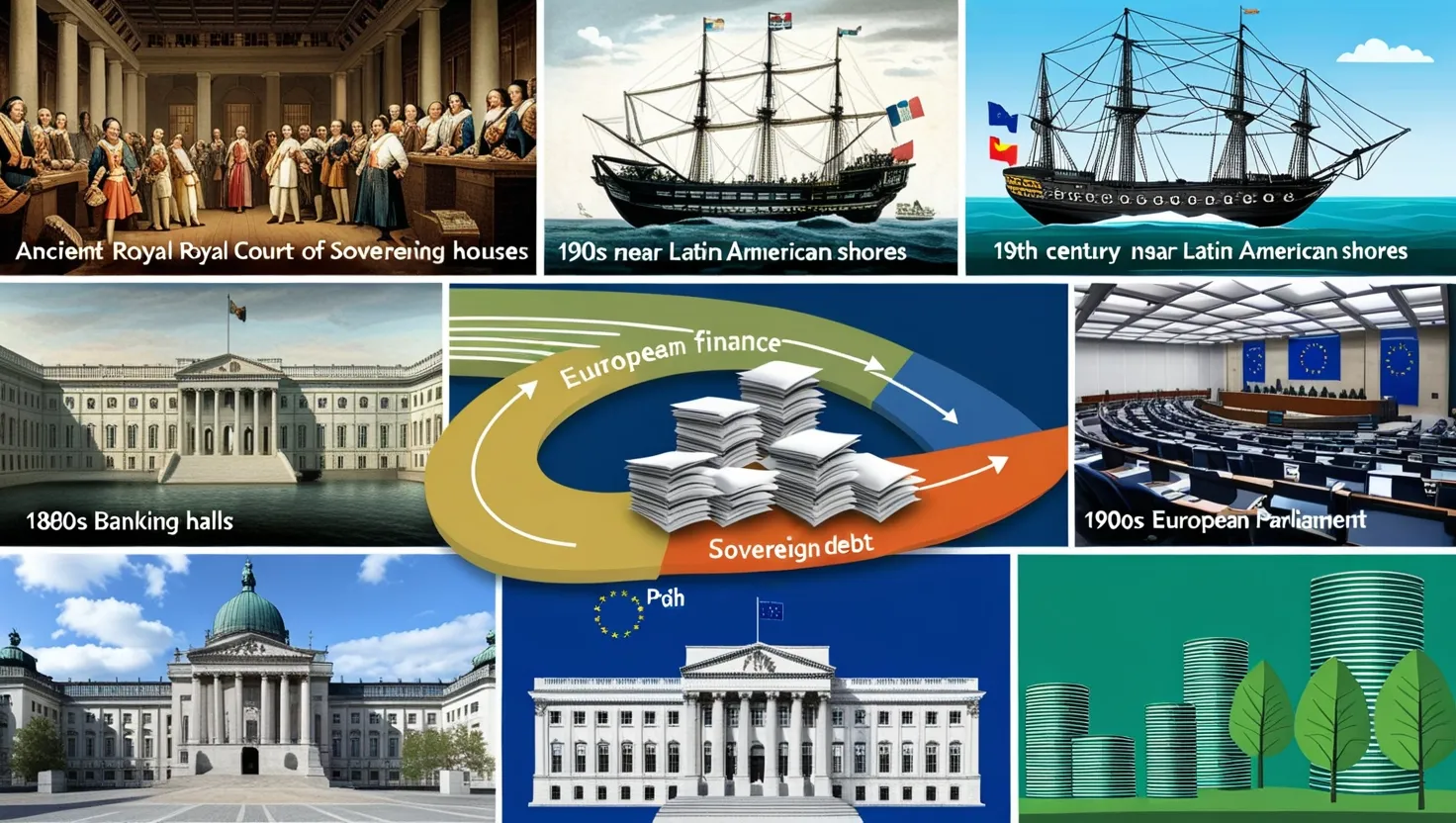The saga of sovereign debt crises is a tale as old as nations themselves, woven into the fabric of global finance with threads of ambition, miscalculation, and the eternal struggle between creditors and debtors. From the grand palaces of 16th century Spain to the bustling trading floors of Wall Street, the dance of debt and default has shaped our world in profound ways.
I’ve always been fascinated by how these crises repeat with eerie familiarity across centuries. It’s as if we’re all actors in some grand economic play, reciting lines written long ago. Yet each new crisis brings its own twists, its own lessons.
Let’s start our journey in the glittering court of Philip II of Spain. Here was a monarch who defaulted not once, not twice, but four times - in 1557, 1560, 1575, and 1596. Can you imagine the audacity? The most powerful ruler in Europe, repeatedly telling his creditors, “Sorry, no can do!”
This wasn’t just a matter of royal whim. Philip’s defaults sent shockwaves through the European banking system, toppling the mighty Fugger family from their perch as Spain’s financiers. It’s a stark reminder that even the mightiest can fall when caught in the web of sovereign debt.
But what truly fascinates me about Philip’s defaults is how they set patterns we still see today. The negotiations, the promises of future payment, the careful dance between debtor and creditor - it all feels remarkably modern.
Fast forward to the 19th century, and we see a new act in our economic drama. Latin American countries, flush with independence and optimism, entered the London bond markets with gusto. But optimism soon gave way to reality, and a wave of defaults swept the continent.
This crisis birthed a new player in our drama: the foreign bondholders’ committee. For the first time, we see creditors organizing across borders to protect their interests. It’s a fascinating development. How do you coordinate hundreds or thousands of individual bondholders spread across different countries? The committees weren’t perfect, but they laid the groundwork for the complex creditor negotiations we see in modern debt restructurings.
Have you ever wondered why creditors don’t just seize assets when countries default? The Latin American crises of the 19th century provide some answers. Gunboat diplomacy was tried - literally sending warships to collect debts - but it proved messy and ultimately ineffective. Countries learned that sovereignty provided a powerful shield against creditors.
As we move into the 20th century, the scale of our drama expands. The 1980s Latin American debt crisis wasn’t just a regional issue - it threatened the entire global financial system. Banks had lent billions to Latin American countries, and suddenly those loans looked very shaky indeed.
This crisis marks a turning point in how we handle sovereign defaults. Instead of outright repudiation, we see a new approach: restructuring and negotiation. The Brady Plan, named after U.S. Treasury Secretary Nicholas Brady, introduced the concept of debt-for-bond exchanges. It’s a model we still use today.
“The only way to deal with a debt crisis is to deal with it.”
- Nicholas Brady
Brady’s words ring true, don’t they? There’s a certain inevitability to debt crises. They will happen. The question is how we deal with them.
The Brady Plan also highlighted something crucial: the importance of official sector involvement. The IMF, World Bank, and major governments all played key roles. It’s a reminder that sovereign debt crises are never just financial issues - they’re deeply political as well.
Speaking of politics, let’s talk about the European debt crisis of the 2010s. Greece’s experience threw into sharp relief the unique challenges faced by countries in monetary unions. How do you manage a debt crisis when you can’t control your own currency?
The Greek crisis also revealed the limits of austerity as a solution to debt problems. Can a country really cut its way to prosperity? The jury is still out, but the human cost of Greece’s austerity measures was undeniably high.
What lessons can we draw from this long history? For one, it’s clear that legal frameworks matter enormously. The rise of collective action clauses in bond contracts, for instance, has changed the game for debt restructurings. These clauses make it easier to negotiate with creditors as a group, rather than having to deal with holdouts individually.
Another key lesson: diversification is crucial. Countries have learned to issue debt in local currencies, extend maturities, and broaden their investor bases. It’s all about reducing vulnerability to external shocks.
But perhaps the most important lesson is this: in sovereign debt, economics and politics are inseparable. A country’s willingness to pay is often just as important as its ability to pay.
Looking to the future, what new challenges await in the world of sovereign debt? Climate change looms large. How will countries manage the costs of adaptation and mitigation? Will we see “green bonds” become a major part of sovereign debt issuance?
Aging populations in many developed countries present another challenge. As the ratio of workers to retirees shrinks, how will countries manage rising healthcare and pension costs?
And what about the rise of new creditors, particularly China? The traditional Paris Club framework for debt negotiations is being challenged by new lenders with different priorities.
“In the long run, we are all dead.”
- John Maynard Keynes
Keynes’ famous quip takes on new meaning in the context of sovereign debt. How do we balance the long-term sustainability of debt with short-term political pressures?
As we wrap up our journey through the history of sovereign debt crises, I’m struck by how much has changed - and how much remains the same. The players may be different, the sums involved vastly larger, but the fundamental drama of creditor versus debtor continues.
What do you think? Are we doomed to repeat the cycles of boom, bust, and default? Or can we learn from history to create a more stable financial system?
One thing’s for certain: sovereign debt crises will continue to shape our world in profound ways. As investors, policymakers, or simply citizens, we ignore this history at our peril. The next act in this grand economic drama is already being written. Will we be ready when the curtain rises?






